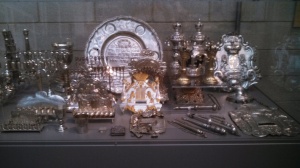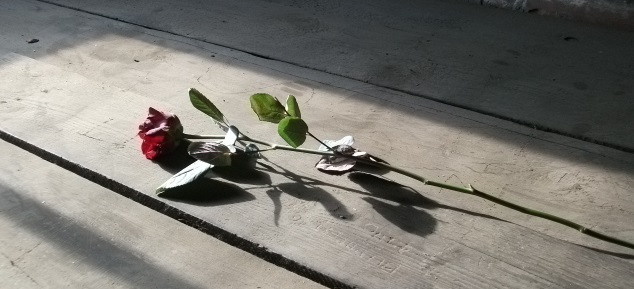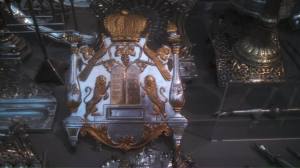So, I’ve been a bit neglectful of the blog ever since I returned from Poland. I actually have a number of posts from my time with the AJC folks still rattling around in my brain—the two exhibition reviews I promised ages ago as well as a gushing fan girl post about the Museum of the History of Polish Jews and why I want to go back to Poland ASAP— I just haven’t put forth the effort to actually write them down. With the start of classes looming over my head (August 26th!) and the thought of beginning my second year of graduate school, I’ve been avoiding anything that even looks like work.
Spoiler alert: work means anything that isn’t lying in the sun and getting my pleasure reading fix while I still can.
So that’s basically what I’ve been doing for the last month when I wasn’t at work. Getting a *little* bit of a tan, letting the sun bleach my hair, and reading to my little heart’s content. But, that means the blog has slipped down on the priority list.
But no more. Summer must come to an end eventually, but I’m not as sad about that as you might imagine because this week I started my internship with the Curation and Collections Department at the Illinois Holocaust Memorial Museum and Education Center, ie the Skokie part of this blog.
After getting a tour of the bowels of the museum—so that I don’t get lost, which I still probably will—I got my first project: create a collection guide for the JCR display. What is the JCR display you ask? This:

Pretties. Basically pretty, shiny things. Or, if you want to get technical, Jewish cultural and ritual artifacts.
In the years after WWII, Jewish Cultural Reconstruction, Inc (JCR) was given authority by the U.S. Government to identify and redistribute “heirless” Jewish cultural objects found in the U.S. occupied zone of Germany. While whole communities of European Jews were murdered in the Holocaust, their cultural heritage remained, but with no immediate descendants left to claim it. The JCR took custody of hundreds of thousands of books as well as thousands of Torah scrolls and ritual objects and redistributed them to institutions throughout the Jewish world. In the early 1950s some of that cultural heritage came to the Hebrew Theological College in Skokie. In 2012 the Hebrew Theological College loaned these artifacts to the Illinois Holocaust Museum so that they could be placed on display somewhere where they would be seen by a larger audience.
Included within these artifacts is this beautiful Torah shield:
This is a Torah shield, a decorative piece used to adorn Torah scrolls in order to increase their beauty and also for the practical purpose of indicating the Holiday or Sabbath reading to be used next. This piece is not only quite gorgeous in person, but its elaborate decorations including the crown and lions flanking the tablets of the law are characteristic of Eastern European Torah shields created in the late 19th century. But, you wouldn’t know any of this just by looking at this artifact. In fact, you probably wouldn’t even know anything about most of these objects unless you’re Jewish or familiar with Jewish religious artifacts. While there is a text panel next to the display that explains all about the JCR and how the objects came to be at the Hebrew Theological College and now at the ILHMEC, there is no information about the individual artifacts themselves.
So, most people looking at this collection would see candlesticks, menorahs, and a lot of other cool shiny things you know nothing about. Not exactly what a museum wants you to take away from one of its exhibits, even if it is a small one.
Let’s see what you make of these examples of pieces from the collection. (Shout out to Joshua Arens for telling me how to do this and giving me the idea).
Final question:
Okay, hopefully you didn’t skip the polls and just come straight down here, because that’s cheating. But here are the answers:
1. The artifacts in this picture are called yads, or Torah pointers, and are used when reading from the Torah. It is believed that touching the Torah would render it impure, and thus the yads are used to avoid touching the Torah when reading. Additionally, not touching the Torah protects the fragile parchment from tearing and the ink from smearing.
2. This is a wimple, or a Torah binder. In Ashkenazi communities Torah binders are made from the swaddling cloth used during a boy’s circumcision and are decorated with the child’s name, date of birth, passages from the Torah, and other symbolic decorations.
3. These beautiful pieces are spice boxes used during the Havdalah ceremony that marks the end of Shabbat. During the ceremony, sweet spices are passed around to represent the sweetness of the Sabbath compared to the rest of the week.
I don’t know about any of you, but I wouldn’t have known these answers just by looking at these objects. Artifacts do not, contrary to the belief of some old-fashioned museums, speak for themselves. So over the next few weeks it’s going to be my job to speak for these objects and create a guide so that the average museum visitor will learn something about these beautiful objects and their place within Jewish ritual and culture. Stay tuned for those updates, they should be interesting. Or, at least involve more cool pictures.




